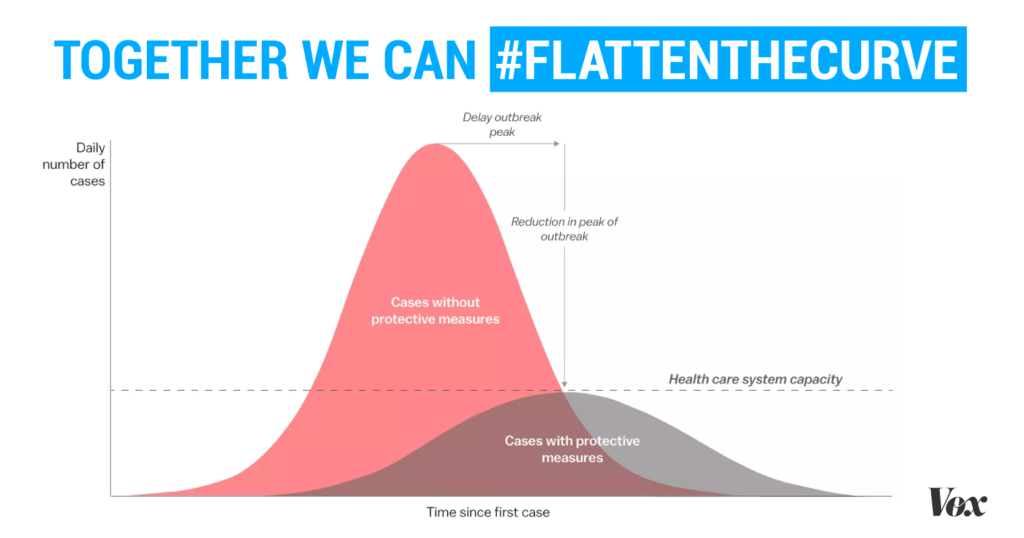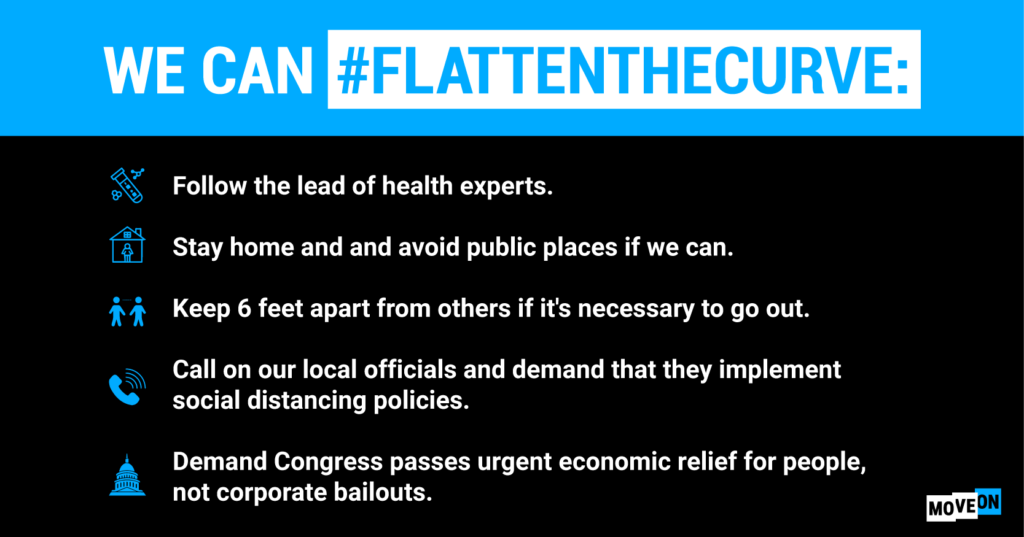We all have a role to play in #FlatteningTheCurve to save lives in the face of the coronavirus pandemic, individually and collectively. Let’s #StayHome to the extent possible and frequently wash hands with soap and water. And let’s organize together to move the government to advance solutions.
(*Not everyone has the ability to #StayHome! That’s why we must all do what we can to limit our time around others to help protect the larger community. Check out these tips for keeping yourself safe if you cannot stay home.)

Thousands of new cases of coronavirus in the U.S. have been discovered so far, hospitals are bracing for a massive influx of people needing care, schools are being closed, businesses are temporarily closing or moving online, and more. And new guidelines are being released daily on how we can stop the spread of the virus.
The biggest way that we can make a difference is by social distancing, which means staying inside as much as possible and limiting our contact with others. This will help “flatten the curve” of the virus—interrupting the spread of the virus and ensuring that masses of people don’t get sick at once, which would overwhelm our fragile health care system and cost an unknown number of lives.

Many of us who are able are already practicing social distancing, but too many people are still gathering in groups. Once you’ve signed the commitment to #FlattenTheCurve, will you share these resources with your friends and family, too?
A joint website of MoveOn.org Civic Action and MoveOn.org Political Action. MoveOn.org Political Action and MoveOn.org Civic Action are separate organizations.
MoveOn.org Civic Action is a 501(c)(4) organization which primarily focuses on nonpartisan education and advocacy on important national issues.
MoveOn.org Political Action is a federal political committee which primarily helps members elect candidates who reflect our values through a variety of activities aimed at influencing the outcome of the next election.
Paid for in part by MoveOn Political Action. Not authorized by any candidate or candidate’s committee.